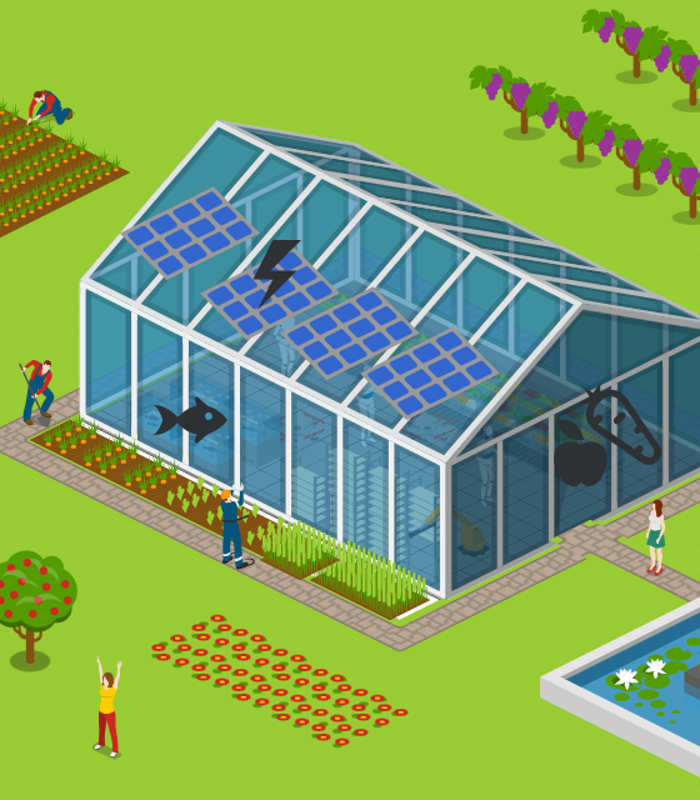Over the past twenty weeks, students Robbin van Arkel, Quincy Brouwer and Koen Schipperen from the Environmental Sciences program and Naomi Vullers from the Healthy Living program worked on an assignment for Curio for Challenge Sustainability of HAS University of Applied Sciences. This vocational training provider explores the possibilities of an innovation park next to the school campus in Bergen op Zoom. Together with Curio students, the students conducted a study into its implementation, including an innovative greenhouse.
The Challenge Sustainability for third and fourth-year students at HAS University of Applied Sciences is a project that aims to combine talent development with sustainability. Students explore their talents and are then linked to a client who presents them with an issue. The idea is that the elaboration of this issue should contribute to sustainable innovative development. With the construction of the innovation park, Curio aims to create a place of connection where local residents, students and companies work together on innovations within the agri-food sector. To this end, it is necessary to map out which educational and sustainable innovations can be applied in the park.
Base layer: education
"The project had two layers", say Robbin, Quincy, Koen and Naomi. "The base layer focused on education and exploring several themes: the living environment, soil, ecology, health and social cohesion. Within the base layer, the aim was to allow MBO and HBO students to collaborate. In this way, the MBO students were able to get a taste of HBO education while at the same time contributing to the development of the park. Our challenge was to guide them. Among other things, we developed a lesson plan with a variety of workshops in which we explored the themes in depth with students from the Urban Green Development program and examined how they can be given a place in the innovation park."
The students sketched two scenarios: one based on a traditional greenhouse and one based on a closed greenhouse.
Top layer: innovation
The top layer was more focused on substance: the students investigated the possibilities for realising a small-scale, innovative greenhouse in the innovation park, with the components water, energy, automation and behavioural change as the point of departure. "To this end, we did a literature search and then sketched two scenarios: one based on a traditional greenhouse and supplemented with innovative cultivation techniques, and two based on a closed greenhouse with 'indoor farming', i.e. cultivation without daylight. Follow-up research will hopefully show which of the two scenarios is the most suitable."
Freedom
The students say that they found the assignment rather challenging. "There was an ambition without preconditions on the table and we were given every freedom to do the assignment according to our own ideas. We needed to find our way at first, because we had a lot of ideas and they went off in all directions. Eventually, we managed to funnel the ideas and give concrete substance to the research. We are very proud of the result. Mentoring the Curio students was a great experience and we were able to use their input for our own content assignment. Curio can now get to work with the advisory report. We can't wait to see what the innovation park will look like in the future."
Continuing the collaboration
"For the Curio program team, collaborating with the HAS students was a novel and also very positive experience," says Manfred van de Kreeke, Agrofood & Biobased Program Manager at Curio. "The same was true for the students of Urban Green Development, who were enthused about the workshops. The sprints approach (from the Scrum method, ed.), in which concrete products were delivered every three weeks, worked well. During the joint sessions, we discussed the research results, which gave us new insights and ideas to work with for our further planning in the coming year. The students presented their recommendations at a kick-off meeting with stakeholders, and the latter responded very positively. We are very pleased that we can continue the collaboration with HAS University of Applied Sciences, because at the start of February two students from the Management of the Living Environment program started creating a landscape design and layout plan for the innovation park as part of their graduation."



